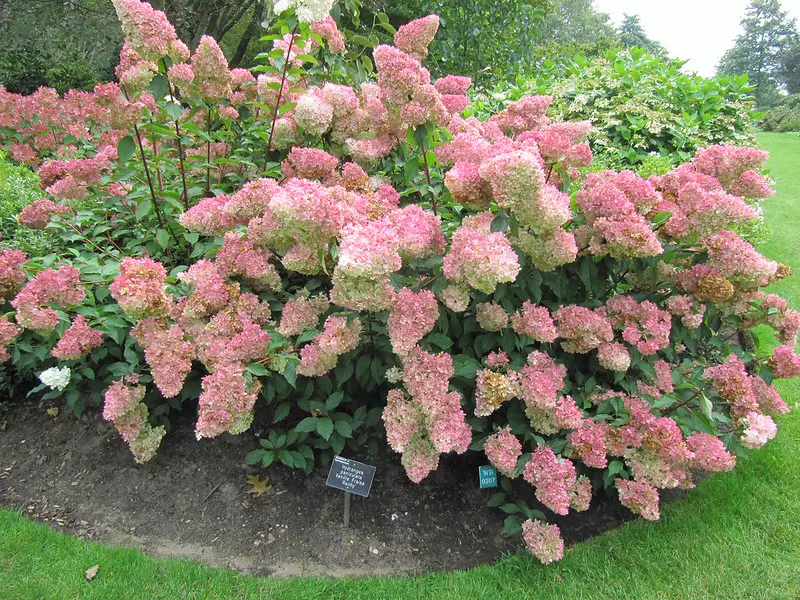
The Ultimate Guide to Hydrangea peniculata (Panicle Hydrangea)
A complete guide to Hydrangea peniculata, including planting, pruning, soil adjustments, eco-friendly pest management, propagation, and garden design ideas.
Read MoreHydrangea paniculata 'Limelight' is a deciduous shrub renowned for its large, dense clusters of flowers that emerge lime green in mid-summer, gradually fading to cream and finally turning shades of deep pink in autumn. The blooms are held upright on sturdy stems, with flowerheads ranging between 15-30 cm in length. The plant typically reaches a height and spread of 1.5–2.5 metres over 5–10 years.
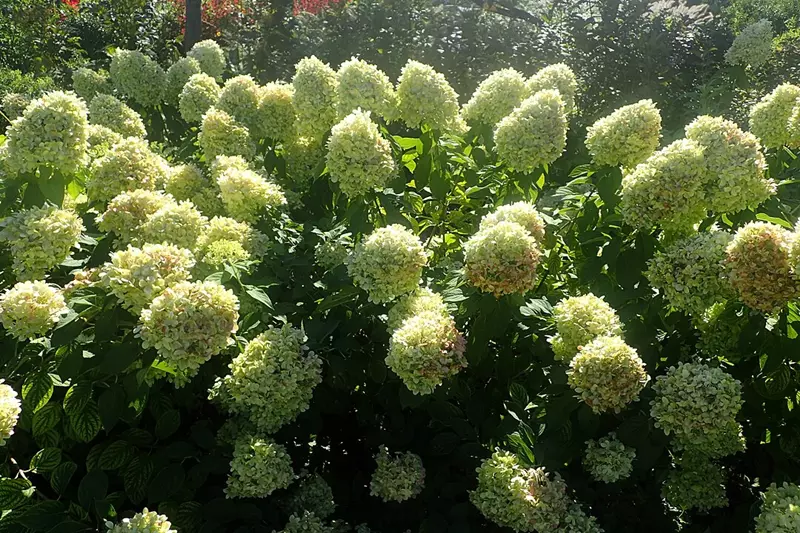
'Limelight' thrives in various environments but has specific requirements:
This hydrangea is particularly suitable for:
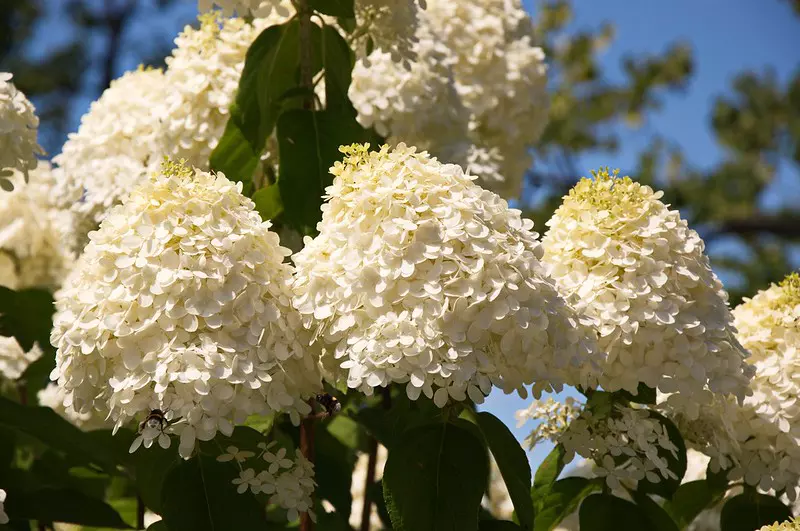
Hydrangea paniculata 'Limelight' is an excellent choice for gardeners seeking a hardy, low-maintenance shrub with extended blooming periods and adaptable growing conditions. However, it's crucial to consider its size and maintenance needs to ensure it aligns with your garden's specific requirements.
The ideal periods for planting 'Limelight' hydrangeas are during autumn and spring. These seasons offer moderate temperatures and consistent rainfall, which facilitate root development. However, with appropriate care, planting can be undertaken at any time of the year.
Choose a location that receives full sun to partial shade. 'Limelight' hydrangeas thrive in areas with morning sun and afternoon shade, especially in hotter climates. Ensure the site has well-draining soil to prevent root rot.
Hydrangea paniculata varieties, including 'Limelight', prefer moist but well-drained soils. Incorporate organic matter, such as compost or well-rotted manure, into the planting area to enhance soil structure and fertility.
Regardless of the planting season or weather conditions, it's crucial to thoroughly hydrate the plant before planting. Submerge the potted hydrangea, container and all, into a bucket filled with water. Hold it underwater until air bubbles cease to rise, typically after 1-2 minutes. This process ensures the root ball is fully saturated, reducing transplant shock and promoting successful establishment.
Apply a 5-7.5 cm layer of organic mulch, such as bark chips or compost, around the base of the plant. Mulching helps retain soil moisture, regulate soil temperature, and suppress weed growth. Ensure the mulch is kept a few centimetres away from the stem to prevent rot.
Maintain consistent soil moisture, especially during dry spells, to support root establishment. Avoid waterlogging, as 'Limelight' hydrangeas prefer moist but well-drained conditions.
Proper planting of Hydrangea paniculata 'Limelight' sets the foundation for a healthy, vibrant shrub that will enhance your garden with its stunning blooms. By following these guidelines, you can ensure successful establishment and long-term growth.
Selecting the right location is crucial for the health of 'Limelight':
Consistent moisture is vital, especially during establishment:
Proper nutrition promotes vigorous growth and abundant blooms:
Pruning is essential to maintain shape and encourage flowering:
'Limelight' is generally resilient but may encounter:
'Limelight' is hardy in most places throughout the UK, even in severe winters. However, in areas with particularly harsh conditions, applying a thick layer of mulch around the base can protect the roots from freezing temperatures.
By adhering to these care guidelines, Hydrangea paniculata 'Limelight' can become a stunning focal point in your garden, offering vibrant and long-lasting blooms from summer into autumn. Regular attention to its specific needs will ensure it remains healthy and visually appealing year after year.
Hydrangea paniculata 'Limelight' is renowned for its vibrant blooms and robust growth. Proper pruning is essential to maintain its health and enhance flowering. This guide provides detailed insights into the optimal timing and techniques for pruning 'Limelight'.
Contrary to some beliefs, the ideal time to prune 'Limelight' is in early spring, around March, after the last frosts have passed. Pruning during this period ensures that the plant is dormant, reducing stress and promoting vigorous growth in the upcoming season.
Avoid pruning in autumn. Pruning during this time can make the plant more susceptible to frost damage, as it may stimulate new growth that isn't hardy enough to withstand winter temperatures. By leaving the plant unpruned through winter, any frost damage will affect the older growth, which can be removed during the spring pruning session.
'Limelight' produces flowers on new wood, meaning the current season's growth. Therefore, appropriate pruning encourages the development of new shoots and enhances flowering.
Pruning Hydrangea paniculata 'Limelight' in early spring, after the danger of frost has passed, is crucial for its health and flowering performance. By adhering to proper pruning techniques, gardeners can enjoy a lush and vibrant display throughout the blooming season.
Hydrangea paniculata 'Limelight' is cherished for its vibrant lime-green blooms and robust growth. Propagating this cultivar allows gardeners to expand their collection and share its beauty. The primary methods for propagating 'Limelight' are through softwood and hardwood cuttings.
Softwood cuttings are taken from fresh, new growth in early summer. This method is favoured for its higher success rate and quicker root development.
Roots typically develop within a few weeks, after which the new plants can be potted individually and gradually acclimatised to outdoor conditions.
Hardwood cuttings are taken from mature, dormant wood during winter. This method is beneficial for producing sturdier plants, though the rooting process is slower.
Once new growth is evident, the cuttings can be transplanted to their final positions.
It's important to note that 'Limelight' is protected by Plant Breeders' Rights. Propagation should be for personal use only and not for commercial purposes without appropriate licensing.
Propagating Hydrangea paniculata 'Limelight' through softwood or hardwood cuttings is a rewarding process that allows gardeners to enjoy more of this stunning plant. By following the outlined steps and considering legal aspects, successful propagation can be achieved.
Hydrangea paniculata 'Limelight' is celebrated for its dynamic and evolving flower colours, which add a captivating visual appeal to gardens throughout the blooming season. Understanding the progression of these hues and the factors influencing them can enhance appreciation and care for this remarkable shrub.
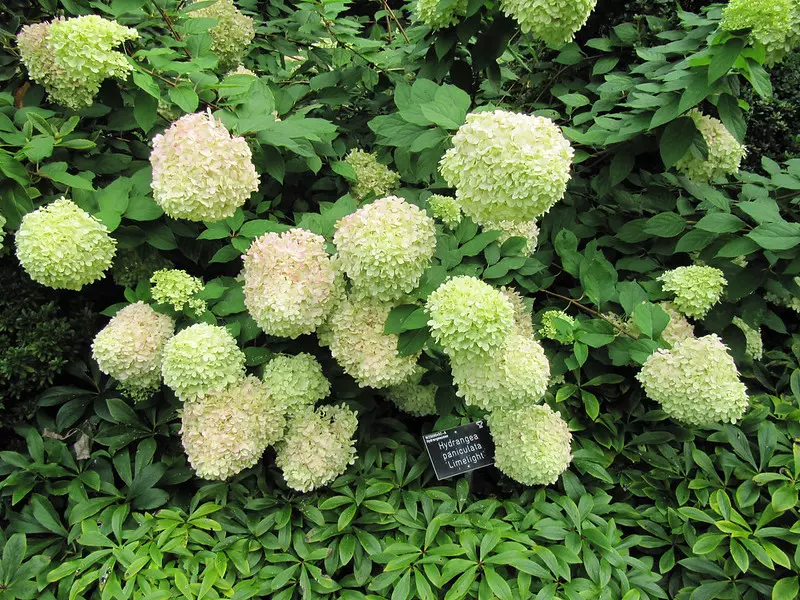
The 'Limelight' hydrangea showcases a distinctive transformation in flower colour from summer to autumn:
This sequential colour change offers prolonged interest and aesthetic diversity in garden landscapes.
Several elements can affect the intensity and duration of each colour phase in 'Limelight' hydrangeas:
To maximise the vibrant display of 'Limelight' hydrangea flowers:
The 'Limelight' hydrangea offers a dynamic and evolving palette of flower colours, transitioning from lime-green to creamy white and culminating in pink and burgundy hues. By understanding and supporting the factors that influence these changes, gardeners can fully appreciate and enhance the ornamental value of this exceptional shrub.
Hydrangea paniculata 'Limelight' is esteemed for its vibrant blooms and resilience. However, like all plants, it can encounter specific challenges. Recognising and addressing these issues promptly ensures the health and longevity of the shrub.
Several pests may affect 'Limelight' hydrangeas:
Regular monitoring and early intervention, such as using appropriate insecticides or introducing natural predators, can effectively manage these pests.
'Limelight' hydrangeas may be susceptible to:
Ensuring good air circulation, avoiding overhead watering, and removing affected plant parts can help prevent and control these diseases.
Environmental factors can also impact the health of 'Limelight' hydrangeas:
Providing consistent moisture, partial shade during peak sun hours, and enriching the soil with organic matter can mitigate these stresses.
By staying vigilant and implementing proactive care strategies, gardeners can effectively address common issues associated with Hydrangea paniculata 'Limelight', ensuring a healthy and flourishing display.
Hydrangea paniculata 'Limelight' is a deciduous shrub celebrated for its stunning lime-green flower heads that gradually transition to creamy white and pink hues as the season progresses. This hardy and versatile plant blooms from midsummer to autumn, providing long-lasting interest in the garden. Its adaptability makes it an excellent choice for various landscape applications.
As a specimen plant, 'Limelight' serves as a focal point in the garden. Planted alone in a prominent location, its large, conical flower panicles draw attention and add vertical interest. The shrub's upright growth habit and impressive blooms make it ideal for anchoring garden beds or accentuating entryways.
'Limelight' integrates seamlessly into mixed borders, complementing perennials and other shrubs. Its changing flower colours harmonise with a variety of plants, such as Rudbeckia, Echinacea, and ornamental grasses. The shrub adds texture and depth, enhancing the overall aesthetic of the border throughout the growing season.
Due to its substantial size and dense foliage, 'Limelight' is effective as a hedge or privacy screen. When planted in a row, it creates a lush, flowering barrier that offers seclusion and reduces noise. Regular pruning can maintain the desired height and shape, while the prolific blooms add beauty to functional spaces.
Placing 'Limelight' near building foundations softens architectural lines and enhances curb appeal. Its moderate size and attractive flowers make it suitable for framing entrances or accentuating corners. The shrub's tolerance of different soil conditions is beneficial in areas where soil quality may vary near structures.
Despite its potential to grow large, 'Limelight' can be successfully cultivated in large containers. This approach is ideal for patios, balconies, or small gardens where ground space is limited. Container-grown plants can be moved to optimise light conditions and protect them from harsh weather, extending their usability in the landscape.
Mass planting of 'Limelight' creates a striking visual impact. Using multiple shrubs in groupings enhances their presence, filling large areas with colour and texture. This method is effective for covering slopes, defining garden sections, or creating a backdrop for other plantings.
The long-lasting blooms of 'Limelight' are excellent for cut flower arrangements, both fresh and dried. Incorporating the shrub into a cut flower garden provides a reliable source of material for bouquets and floral displays. Harvesting flowers can also encourage new growth and prolong the blooming period.
'Limelight' attracts bees, butterflies, and other pollinators, supporting local ecosystems. Integrating the shrub into wildlife gardens promotes biodiversity and contributes to the health of beneficial insect populations. Its late-season blooms provide a food source when other plants have finished flowering.
Due to its hardiness and low maintenance requirements, 'Limelight' is suitable for urban landscapes and public parks. It tolerates pollution and can thrive in challenging conditions, offering reliable performance in city environments. The shrub enhances green spaces, providing aesthetic value and environmental benefits.
Hydrangea paniculata 'Limelight' offers diverse applications in landscape design. Its adaptability to various settings, impressive floral display, and ease of care make it a valuable addition to any garden. Whether used as a focal point, part of a mixed border, or in mass plantings, 'Limelight' enhances outdoor spaces with its enduring beauty.

A complete guide to Hydrangea peniculata, including planting, pruning, soil adjustments, eco-friendly pest management, propagation, and garden design ideas.
Read More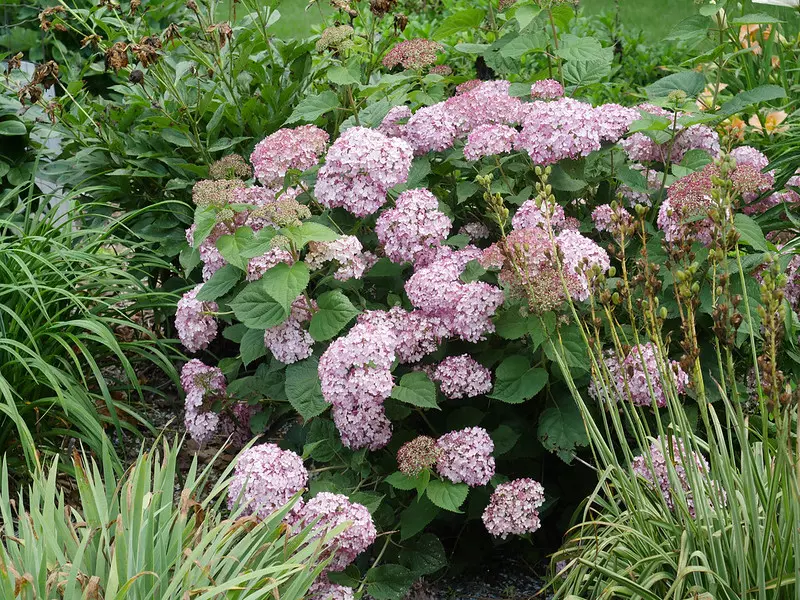
Discover what to plant with hydrangeas to create a thriving and visually stunning garden. Learn about the best companion plants and their benefits.
Read More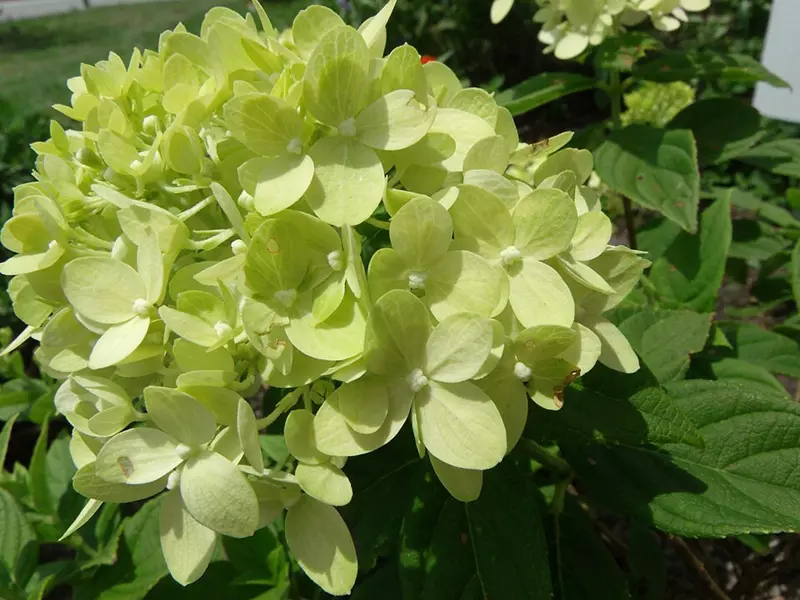
Discover the top 10 Hydrangea paniculata varieties popular in the UK. These stunning plants are ideal for gardens of all sizes and styles.
Read More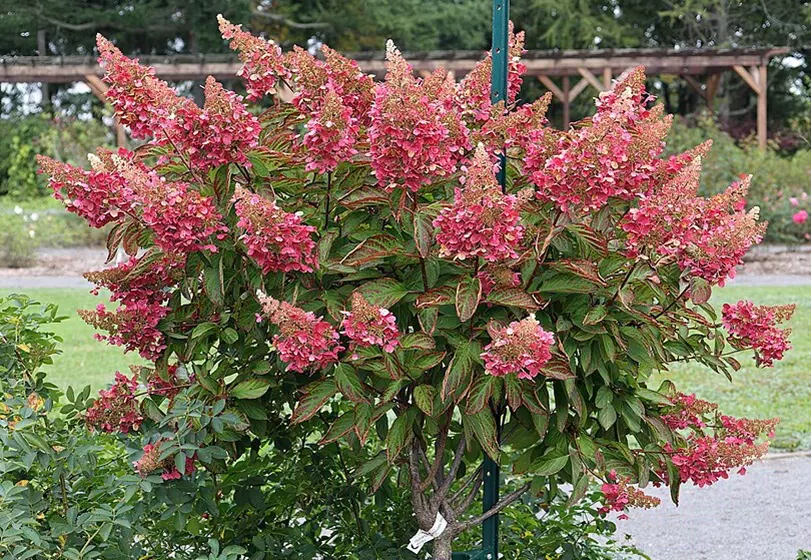
Discover the beauty and care tips for Hydrangea paniculata 'Pinky Winky'. Learn how to grow, prune, and use this stunning shrub in your garden.
Read More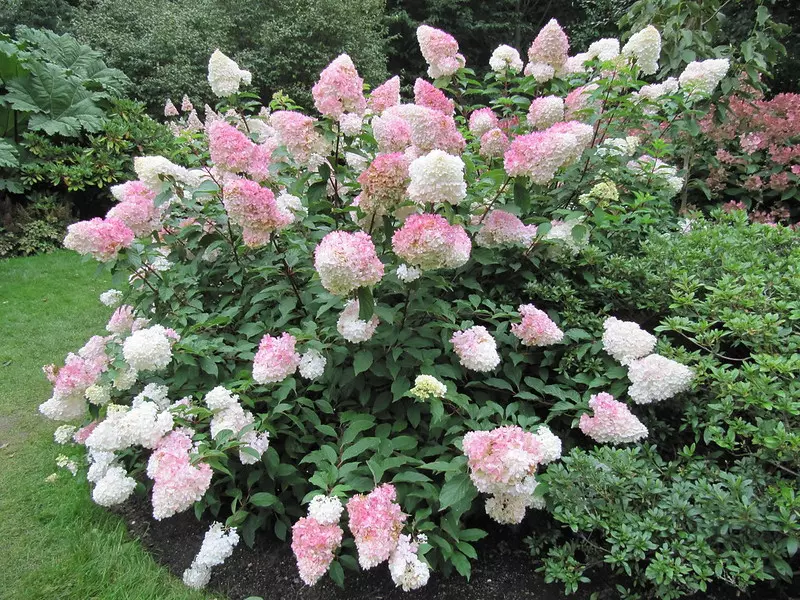
Discover the complete care and maintenance guide for Hydrangea paniculata 'Vanille Fraise', including planting tips, pruning advice, and pest management.
Read More
Discover the top 10 most popular hydrangea varieties in the UK, their unique characteristics, and tips for incorporating them into your garden.
Read More